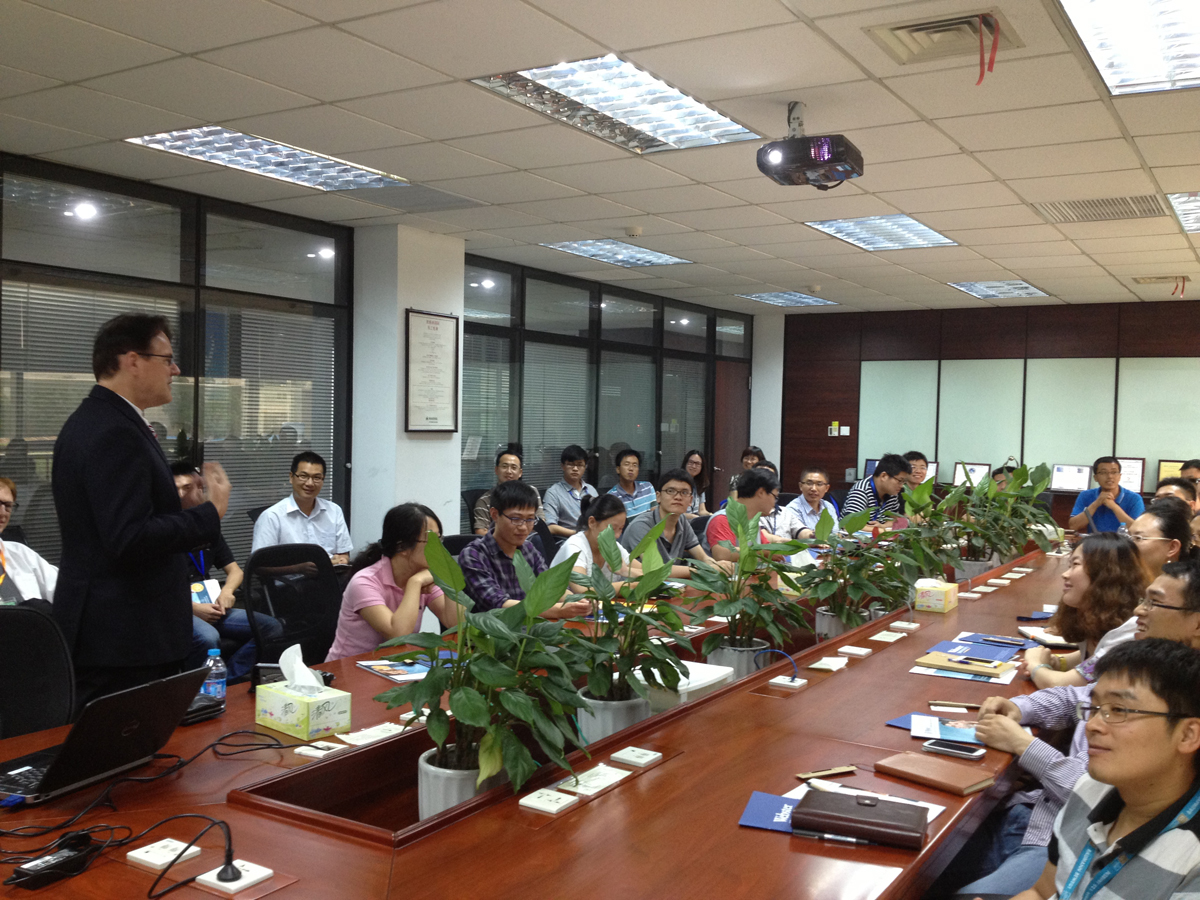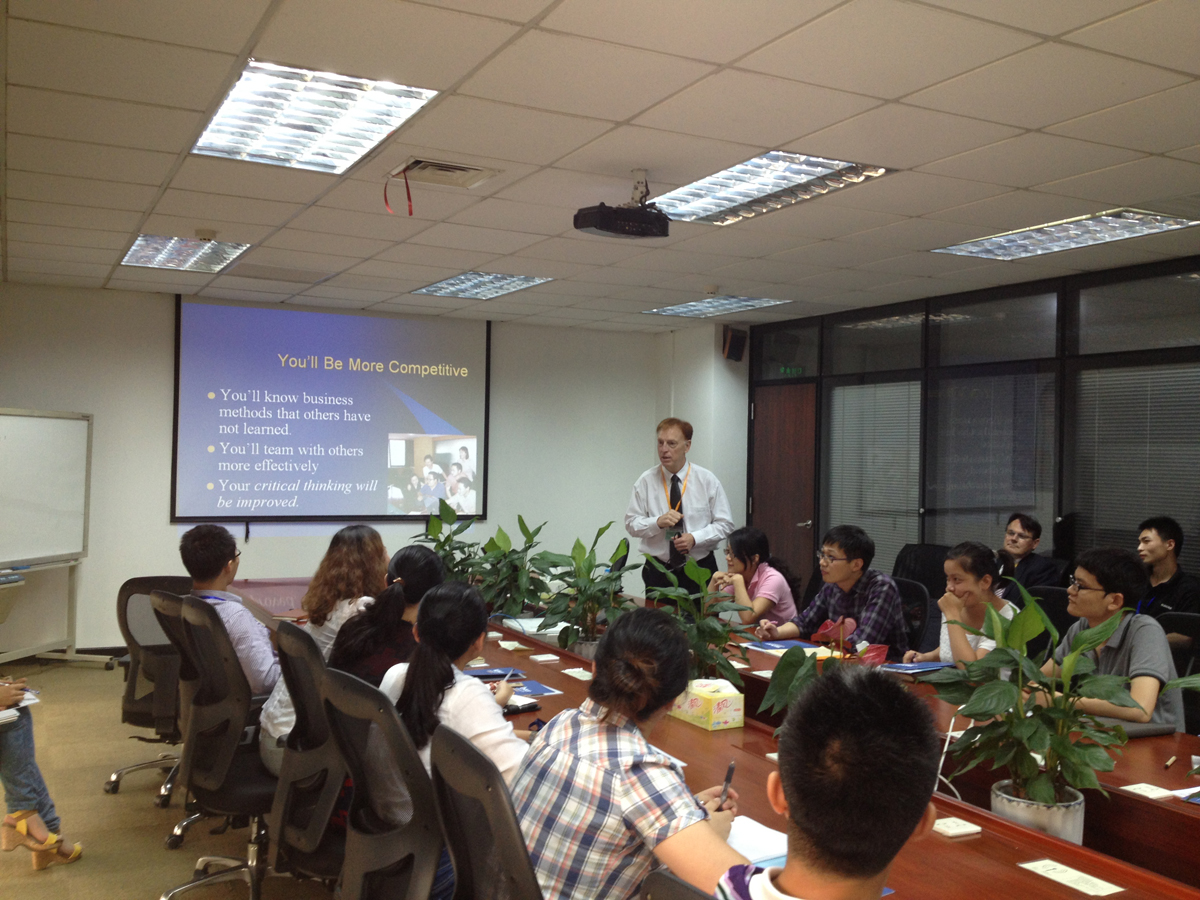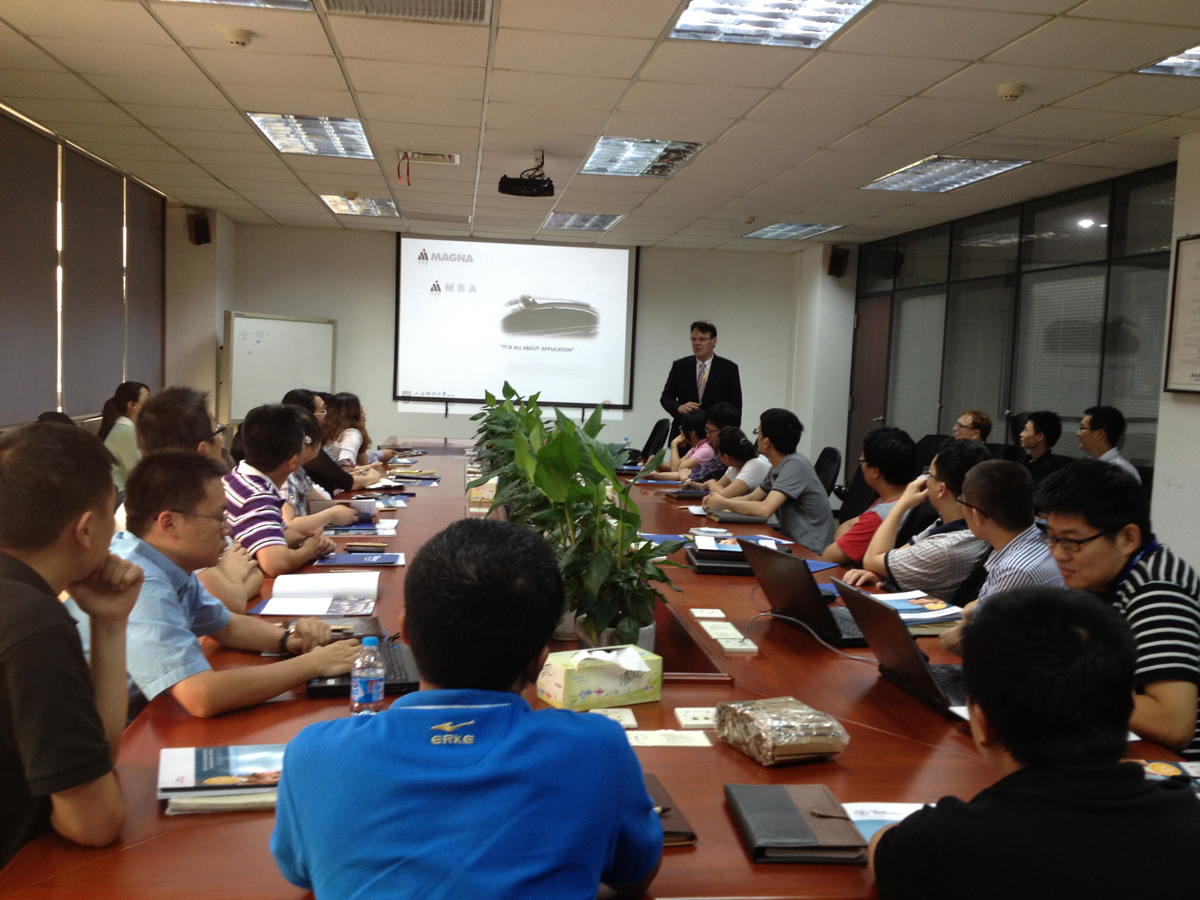After the meeting with 30 young engineers, HR people and others from Magna Closures, I told Professor
Paul Bon he should take his talents to CNBC Financial News. Prof. Bon took the audience by storm at a
company that makes automotive parts that allow things to open, close, lock, and power doors and
windows. Magna has a production operation at a place just outside of Shanghai called Kunshan. The
international company has a list of customers that jump off the pages of Car and Driver. He wasn't
wowing a group of financial analyst, but operations and administrative young people, who certainly did
not live and breathe stock market or money supply; however, within minutes they were laughing and
pointing and visibly saying yes and no about things like investment, debit, credit and profit. They left
knowing cash coming in and cash on hand was like blood for the body.

The Canadian company has commercial customers and end users around the globe. Our team from
Webster University and Shanghai University of Finance and Economics (SUFE) was invited to talk about
innovation and entrepreneurship. Kunshan General Manager, Benson Wang, had been an MBA
graduate of Webster/SUFE at Shanghai in 2000. Mr. Wang is in a position to appreciate globalism,
competition, and profitably and asked us to the company to talk about these important issues.

Paul Bon showed how important the "investment" aspect is to the company, investors, and creditors.
Eighty minutes wasn’t enough time to drill down on all of the details of taking an investment forward,
but the Webster professor put the audience on the seat of their chairs, until they started questions like,
"and how do you know if this investment will payoff in returning cash to you?"
Paul told the group, "You will have to come to my class at the MBA to learn the rest of the method."
Big laugh from the audience.
One astute, Magna employee answered, very correctly, a question posed by Paul about cash value over
time. "Do you work in the finance department, here at Magna?" No, the young man told Prof. Bon.
I am an engineer. Bon went on to explain that engineers make very good finance students, saying, they
are already comfortable and even enthusiastic about numbers.

Before the government put in vastly improved highway systems around Shanghai, and much of the
whole Yangzi Delta Area, it took more than two hours to go from Shanghai to Kunshan. Now, it's a
car-highway commute that can take only 30 to 40 minutes one way, but the capstone of the
transportation system is China's high-speed trains. Service between Shanghai and Kunshan is very
regular, but you have to look at the schedule and plan your use. I knew about the time when we would
be wrapping up at Magna, and I jotted down a list of four train times from 4:30 P.M. to 6:00 P.M. I'd
used the fast-train before for visit to the sprawling Kunshan Giant bicycle factory, so I knew factory
operations were all very close to the high-speed train station.
Prof. Bon drove back to Shanghai, reporting good speed and clear traffic, but I moved from Kunshan to
Shanghai in about 18 minutes, arriving at the Hongqiao Station. Other high speed trains along the
route can take passengers to the Shanghai North Station, also, about a 20 minute trip. Both train
stations conveniently connect to the Shanghai Metro System, 14 lines and more than 250 stations,
making the combined system almost seamless. Kunshan is essentially pulled into the very center of
Shanghai, not just contiguous, or close, but arrival and departure at the most important areas of
Shanghai City.
